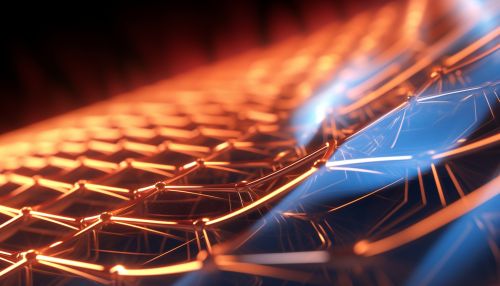Nanophotonics
Introduction
Nanophotonics, also known as nano-optics, is a branch of physics that studies the behavior of light and its interaction with nanoscale objects. This field is a combination of optics, photonics, and nanotechnology, focusing on the discovery and application of novel optical properties at the nanoscale.


History
The history of nanophotonics can be traced back to the late 19th century when Michael Faraday and Gustav Mie first studied the interaction of light with nanoparticles. The term "nanophotonics" was coined in the late 20th century, with the advent of nanotechnology and the ability to manipulate matter at the nanoscale.
Principles of Nanophotonics
Nanophotonics operates on the principles of quantum mechanics and quantum optics. The key principle is the interaction of photons with nanoscale particles or structures, which can result in unique optical properties not observed in bulk materials.
Applications of Nanophotonics
Nanophotonics has a wide range of applications in various fields such as telecommunications, medicine, solar energy, and information technology.
Telecommunications
In telecommunications, nanophotonics is used in the development of high-speed, high-capacity optical communication systems. The use of nanophotonic devices such as optical fibers and photonic crystals has greatly improved the efficiency and speed of data transmission.
Medicine
In medicine, nanophotonics is used in the development of advanced diagnostic and therapeutic techniques. For example, biophotonics, a subfield of nanophotonics, involves the use of light to study biological materials at the nanoscale, leading to advances in imaging and therapy.
Solar Energy
In solar energy, nanophotonics is used to improve the efficiency of solar cells. By manipulating light at the nanoscale, researchers can enhance light absorption and reduce energy loss, leading to more efficient solar energy conversion.
Information Technology
In information technology, nanophotonics is used in the development of ultrafast, high-capacity data storage and processing systems. The use of light in data transmission and processing can significantly increase the speed and capacity of information systems.
Future of Nanophotonics
The future of nanophotonics is promising, with ongoing research and development in various fields. As our understanding of light-matter interactions at the nanoscale continues to grow, we can expect to see more advanced applications of nanophotonics in the near future.
